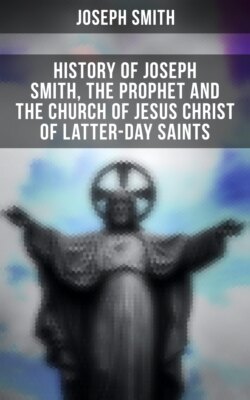Читать книгу History of Joseph Smith, the Prophet and the Church of Jesus Christ of Latter-day Saints - Joseph F. Smith - Страница 33
На сайте Литреса книга снята с продажи.
Footnotes
Оглавление1. Doctrine and Covenants, sec. 38.
2. Doctrine and Covenants, sec. 39.
3. Doctrine and Covenants, sec. 11.
4. Newel Kimball Whitney was descended from the Whitneys of Watertown, Mass., who emigrated from England in 1635. His mother was a native of the "Bay state," and his father of the state of Vermont. There, also, Newel was born, in Marlborough, Windham county, February 5, 1795. A natural business man, he made his own way in the world, and after figuring as a sutler during the war of 1812, and taking part in the battle of Plattsburg, near Lake Champlain, he established himself as an Indian trader at Green Bay, Lake Michigan. He next settled in Ohio, where he made the acquaintance of Algernon Sidney Gilbert, a merchant of Painesville, whose partner he became in the successful firm of Gilbert and Whitney at Kirtland. In October, 1822, he married Elizabeth Ann Smith, a young lady from Connecticut, who is known in Church history as "Mother Whitney." When Oliver Cowdery and his fellow missionaries came to Kirtland, en route to Missouri, the Whitneys were Campbellites, members of Sidney Rigdon's flock, but upon hearing the fulness of the Gospel as preached by those Elders, they embraced it. In the Whitney family folk lore the incident of the Prophet's arrival at Kirtland is thus related: "About the first of February, 1831, a sleigh containing four persons drove through the streets of Kirtland and drew up in front of the store of Gilbert and Whitney. One of the men, a young and stalwart personage alighted, and springing up the steps walked into the store and to where the junior partner was standing. 'Newel K. Whitney! Thou art the man!' he exclaimed, extending his hand cordially, as if to an old and familiar acquaintance. 'You have the advantage of me,' replied the merchant, as he mechanically took the proffered hand, 'I could not call you by name as you have me.' 'I am Joseph the Prophet,' said the stranger smiling. 'You've prayed me here, now what do you want of me?'" The Prophet, it is said, while in the East had seen the Whitneys, in vision, praying for his coming to Kirtland. "Mother Whitney" also tells how on a certain night prior to the advent of Elder Cowdery and his companions, while she and her husband were praying to the Lord to know how they might obtain the gift of the Holy Ghost, which of all things they desired, they saw a vision as of a cloud of glory resting upon their house, and heard a voice from heaven saying, "Prepare to receive the word of the Lord, for it is coming." Shortly afterwards Oliver Cowdery and his associates came with the Book of Mormon, and with the message of the restored Gospel. Moreover, in further fulfilment of this vision, under the rooftree of the Whitneys the Prophet received a number of the revelations contained in this volume.
5. This organization, called "the family," came into existence before the Gospel was preached in Kirtland, through an effort of the people of this neighborhood to live as the early Christians are said to have lived, viz., "And the multitude of them that believed were of one heart and of one soul: neither said any of them that ought of the things which he possessed was his own, but they had all things common."—(Acts 4:32.)
6. Doctrine and Covenants, sec. 41.
7. This refers to the promise which the Lord gave in the revelation of January 1831, see p. 142, verse 32.
8. Doctrine and Covenants, sec. 42.
9. The words, "or High Priests," were added by the Prophet some years after: and also the words, "High Council," in the 34th verse.—Orson Pratt.
10. The words, "or High Priests," were added by the Prophet some years after.—Orson Pratt.
11. Verses 74 to 93 inclusive, were given some days after the first 73 verses.—Orson Pratt.
12. This woman's name, according to the history of the church kept by John Whitmer, was Hubble. "She professed to be a prophetess of the Lord, and professed to have many revelations, and knew the Book of Mormon was true, and that she should become a teacher in the church of Christ. She appeared to be very sanctimonious and deceived some who were not able to detect her in her hypocrisy; others, however, had the spirit of discernment and her follies and abominations were manifest." John Whitmer's History of the Church, ch. 3.
13. Doctrine and Covenants, sec. 43.
14. Doctrine and Covenants, sec. 44.
